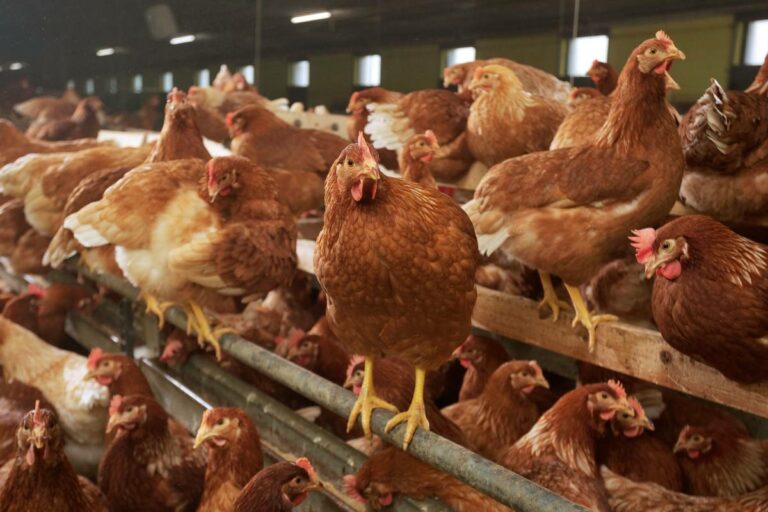Access to organic soya oil, has enabled ForFarmers to launch a new range of organic feeds. UK feed mills haven’t had ready access to organic oil due to limited, holding tank space and cultivation of organic soya, said Iain Campbell, Poultry Specialist at ForFarmers. “Due to the nutritional needs of organic poultry, we’ve used our resources and purchasing power, to source organic soya oil manufactured in Europe.”
Organic formulations have previously been limited by space, as higher levels of cereals, in particular maize, were included in order supply sufficient energy to birds. “Egg production requires a lot of calories. Including organic oil means we can supply the energy hens need, and free up space in the diets.”
ForFarmers has many years of experience supplying feed to organic livestock producers, along with diverse technical and manufacturing knowhow. “Personally, I’ve been working with organic layer customers – both established and new conversions – offering nutrition and management advise throughout my tenure. These years of experience with producers mean we know exactly what they want and what the birds needed.”
A capital investment project to install a holding tank specifically for organic oil, along with a dedicated delivery system, was required to realise the company’s plans. “This allows quantities of oil to be directly metered into the mixer, which is linked to the mill’s computerized manufacturing and formulation software. The use of oil further improves the quality, consistency, flow through feeding systems and palatability of the diet.
Another challenge when formulating organic diets is delivering amino acid requirements without access to pure individual amino acids, which inevitably leads to the oversupply of protein. “When a layer’s diet is too high in protein, gut health is negatively affected, which can lead to wet litter. Achieving the level of methionine required for optimal egg production, is a particular issue.”
The new diets include feed materials that support the bird’s functional methionine requirements and methionine regeneration; freeing up other sources of the amino acid for structural processes essential for increased productivity and egg size.
“In the new diets we are able to more easily meet energy requirements from oil supplementation and are able to more fully exploit medium energy ingredients such as sunflower meal. This, as well as providing protein, is an excellent source of structural fibre. Which improves gizzard function and helps support intestinal health.”
The use of GM technology in enzyme production prohibits the access of many feed enzymes to organic farmers. However, ForFarmers has identified one multi-functional enzyme, produced naturally without GM technology, which is acceptable to organic production systems. Primarily designed to aid the digestion of feed by assisting the breakdown of components from cereals; the multi-enzyme product helps overall digestive efficiency, promotes intestinal health and helps reduce excreta moisture content.
Organic egg producers use the same layer genetics as in free-range and colony-cage systems, therefore requiring the same level and quality of nutrition. “With the Natural Organic range ForFarmers is providing exactly that. This phased feeding system is now being supplied to both organic egg and pullet producers within our customer base. The diets sit within the company’s VitaFocus layer range, which includes the: Supreme, Caledonian and Prestige ranges.” These new rations also utilise nutritional concepts, which support shell and egg quality, as well as size; over longer laying cycles.
Most organic layer feed is produced in the form of a crumb, to mitigate the problem of a lack of oil resulting in dry, dusty feed. “A mash is undoubtedly the best way to feed laying hens – the availability of organic oil has allowed us to produce our organic rations in this form. There are significant advantages in terms of gizzard function, digestibility and efficiency.”
ForFarmers started manufacturing the new range at the Penrith mill in February. “Most of the organic egg producers I work with have switched, or are in the process of switching, to the new range. They have quickly noticed improvements in shell quality, seeing less seconds. Also reporting greater feed intake, which means more nutrients available for egg production.”
Many comments have focused on the feed form, the mash flows very well through feeding systems, with less wastage, he says. “By investing technically in our diet offering, we are now able to supply the ration that all organic egg producers need. With the benefits of a mash, this cutting-edge nutritional development, allows organic layers to fulfil their genetic potential.”

Chloe Ryan
Editor of Poultry Business, Chloe has spent the past decade writing about the food industry from farming, through manufacturing, retail and foodservice. When not working, dog walking and reading biographies are her favourite hobbies.

